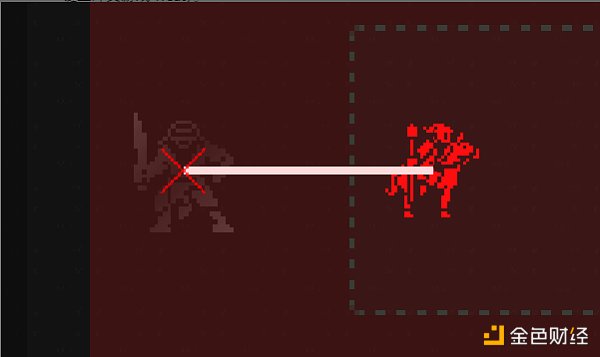Author: William M. Peaster, Bankless; Translation: Blockingxiaozou
1. Analysis of Full-Chain Games
In the crypto world, the term “onchain” has two different meanings. One is a newer, looser meaning that refers to general blockchain applications. “Put your music on the chain,” for example, by putting your songs as NFTs on sound.xyz, etc. This meaning is increasingly being used.
However, keep in mind that you can mint tokens on Ethereum while still storing the token’s art or other resources off-chain, such as on private servers or external storage like IPFS.
- EmblemVault bringing BRC-20 to ETH: is it a good or bad thing?
- Opside ZK-PoW V2 version: ZKP calculations can be shortened to less than one minute in multi-miner scenarios.
- Cryptocurrency narratives worth paying attention to this year: LSD, RWA, Onchain Game…
The second, older, and more technical meaning of “onchain” is that all of a certain NFT series or blockchain-based project’s content is stored directly on-chain, such as directly on Ethereum.
While more expensive than off-chain storage, this on-chain storage can provide significant persistence and openness, as long as Ethereum exists, the on-chain project will exist and can be built around indefinitely.
Of course, there is a certain range of division. Some projects have the lowest dependence on the blockchain, some projects use a combination of off-chain and on-chain storage, and some projects are completely on-chain. This range also applies to blockchain games.

Autonomous Worlds belongs to the “completely on-chain” game category. In such projects, the logic and state of a game are completely stored on-chain, meaning that their rules and progress are tracked in smart contracts, and all game data is on the blockchain, which paves the way for interoperability. Therefore, Autonomous Worlds is also client-agnostic, and anyone can create their own interface to interact with the underlying game.
2. Why are Autonomous Worlds important?
Autonomous Worlds can be infinite games, games that run independently of their creators, are open to everyone, and develop over time. The game itself becomes a protocol and an autonomous world, allowing users to build on it accordingly.
Therefore, the “open-source system + continuously online” nature of these games is a huge boon for interoperability and fundamentally changes the way traditional games work, which are closed systems controlled by their creators. In Autonomous Worlds, players can create their own extensions based on their own conditions, forming a constantly evolving and changing bottom-up ecosystem.
In addition, games made in this full-chain manner can also become economic systems themselves. They can have their own currency, market, and economic rules, creating new forms of economic organization that can coexist with traditional economies. These games are not just about entertainment, but also a path to the “new economic social structure” of the virtual world.
3. Autonomous World Game Engine

The scene of the autonomous world is currently very small, but is expected to grow significantly in the next decade. In order to achieve this goal, some important early efforts are mainly focused on the development of “on-chain game engines”, which are used to release their own autonomous world frameworks or to carry out related construction of autonomous worlds.
Some on-chain game engines that you should pay attention to now include:
MUD: Developed by the Lattice team, this “multi-user dungeon” framework can create complex on-chain applications directly on the Ethereum virtual machine (EVM) network. You may recall that it was used last year to create the on-chain voxel game OPCraft on Optimism.
Keystone: Built by the Curio team, this framework is a true Optimism-based L2 chain with a built-in engine dedicated to parallel gaming activities. Curio is currently using this technology stack to build its own on-chain diplomacy game Treaty.
Dojo: An on-chain game engine and “toolchain” based on StarkNet, supporting the Rust and Cairo programming languages.
Argus: Argus is a game publisher committed to developing its own on-chain game developer studio stack World Engine, which is a sharded L2 platform, so games can be horizontally built on the network.

4. Conclusion
In the December 2022 issue of Zora Zine, writer and entrepreneur Yancey Strickler predicts that the on-chain era is coming, and he predicts that this era will be defined as “a period when most of the creative cultural output, shared history, and information infrastructure in the world will be established, stored, and accessed on-chain.”
I fully agree with Strickler’s view, and I think the rise of Autonomous Worlds is part of the prosperous development of the on-chain era. Perhaps in 10 years, when we look back, we will think that these types of games are obvious in hindsight, but now we are at the starting point of this field. This is really exciting, and if Lattice’s recent Top 100 project Autonomous World Hackathon is any indication, the fun is just getting started! Stay tuned and show your skills!
Like what you're reading? Subscribe to our top stories.
We will continue to update Gambling Chain; if you have any questions or suggestions, please contact us!